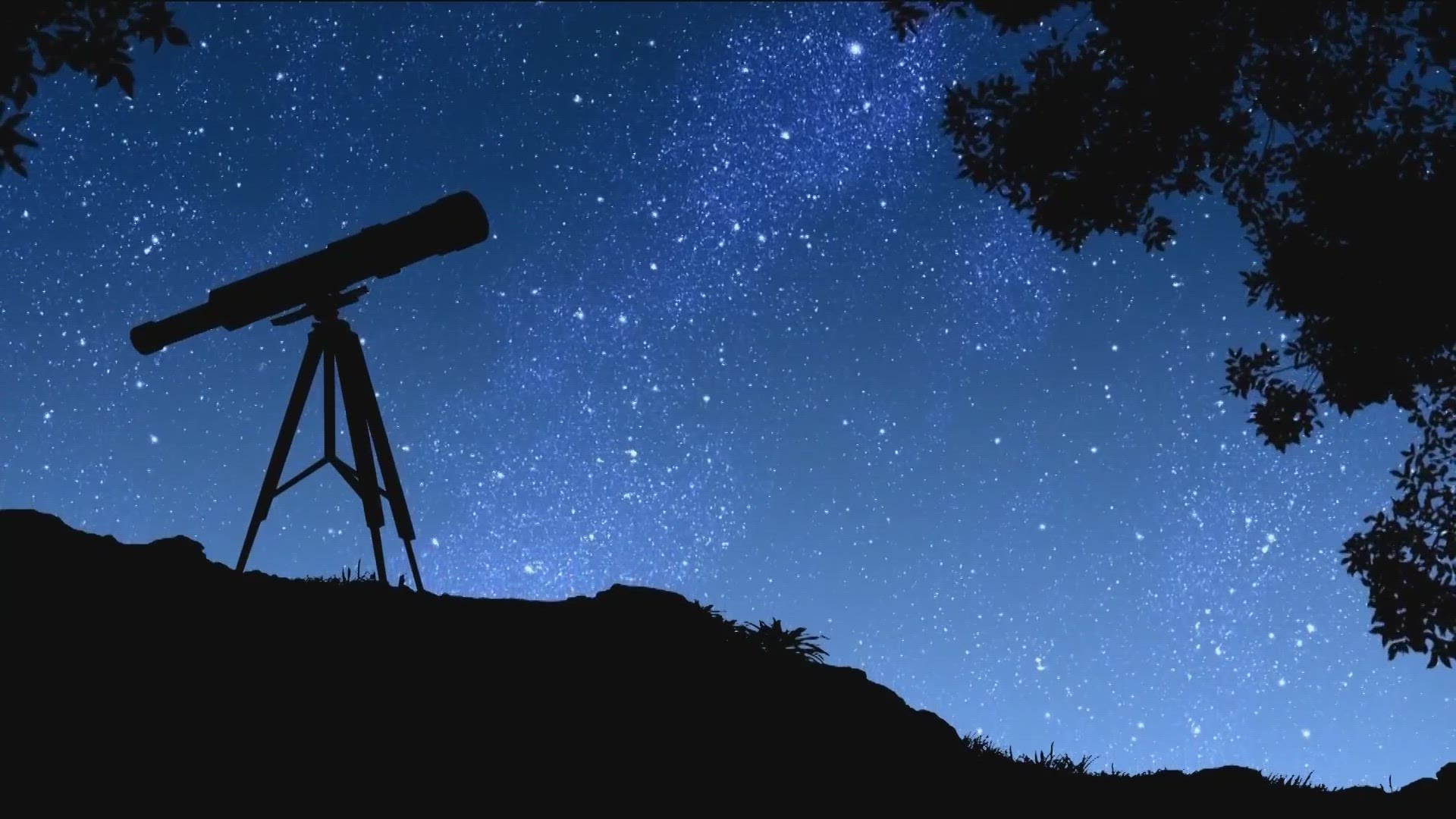IDAHO, USA — It's time to keep your eyes to the sky again. Earlier this month, Venus and Jupiter got very close to each other, making for a spectacular sight. Now, some other planets will be joining them.
Dr. Brian Jackson is an associate professor in the physics department at Boise State University. Jackson said that all the planets orbit the same plane, so you should be able to draw a line from one to the other. However, it will be less like a straight line and more like an arc.
"Mercury, Venus, Mars, Jupiter, and Uranus, they're all going to line up more or less along a path in the sky," Jackson said. "And so, if you get out under a clear night sky over the next couple of days, you'll have this really spectacular view of the planets in our solar system."
According to Jackson, Jupiter and Mercury are very close to the sun right now. The best time to view these two planets will be right after sunset, and they will be close to the sun on the western horizon. Jackson said that, following that, if people look up toward the left they will be able to see Venus (it will look like a very bright star), and then very close to that will be Uranus.
"For folks down here in the valley, kind of in the bright part of Boise, are probably not going to be able to see Uranus from the city you're in," Jackson said. "You'd need to leave and head down to Marsing, or even further south than that, maybe Murphy, to get out of the light. And then, you might have a chance of seeing Uranus. Venus will be very easy to find, though. And then very close to the moon, you can see the planet Mars."
Jackson adds the best time to see this alignment will be within a half hour of the sun setting. Jupiter and Mercury will be the first to disappear. Venus will probably be visible until 10:30 p.m., Mars until 3 a.m.
To clarify, even though they should all be visible around sunset, they may be hard to spot at the same time.
"Folks won't need any special equipment folks to see the planets. One of the good things about planets, you can see them with your naked eye. For the most part, Uranus is a little trickier because it is dimmer. So, if you have a telescope or binoculars, you might want to use them to catch Uranus. And then again, you want to be outside of the city to see it," Jackson said.
People can see this alignment over the next few days, but the peak is Tuesday. Jackson said the next time an alignment like this will happen again is 2040. However, the planets are going to be very close to the sun at the time and hard to see. So, weather permitting, this year may be a better time to spot them.
For those interested in learning more about astronomy, an opportunity is coming up. Boise State University has an astronomy event the first Friday of every month. The next event is April 7th at 7:30 p.m. in the Education Building Room 112. The guest speaker is Dr. Christopher Carrol from Washington State University, who will speak on galaxies. Dr. Jackson said if the weather is clear, they will even take people up to the observatory to do some stargazing.
Watch more Local News:
See the latest news from around the Treasure Valley and the Gem State in our YouTube playlist:

